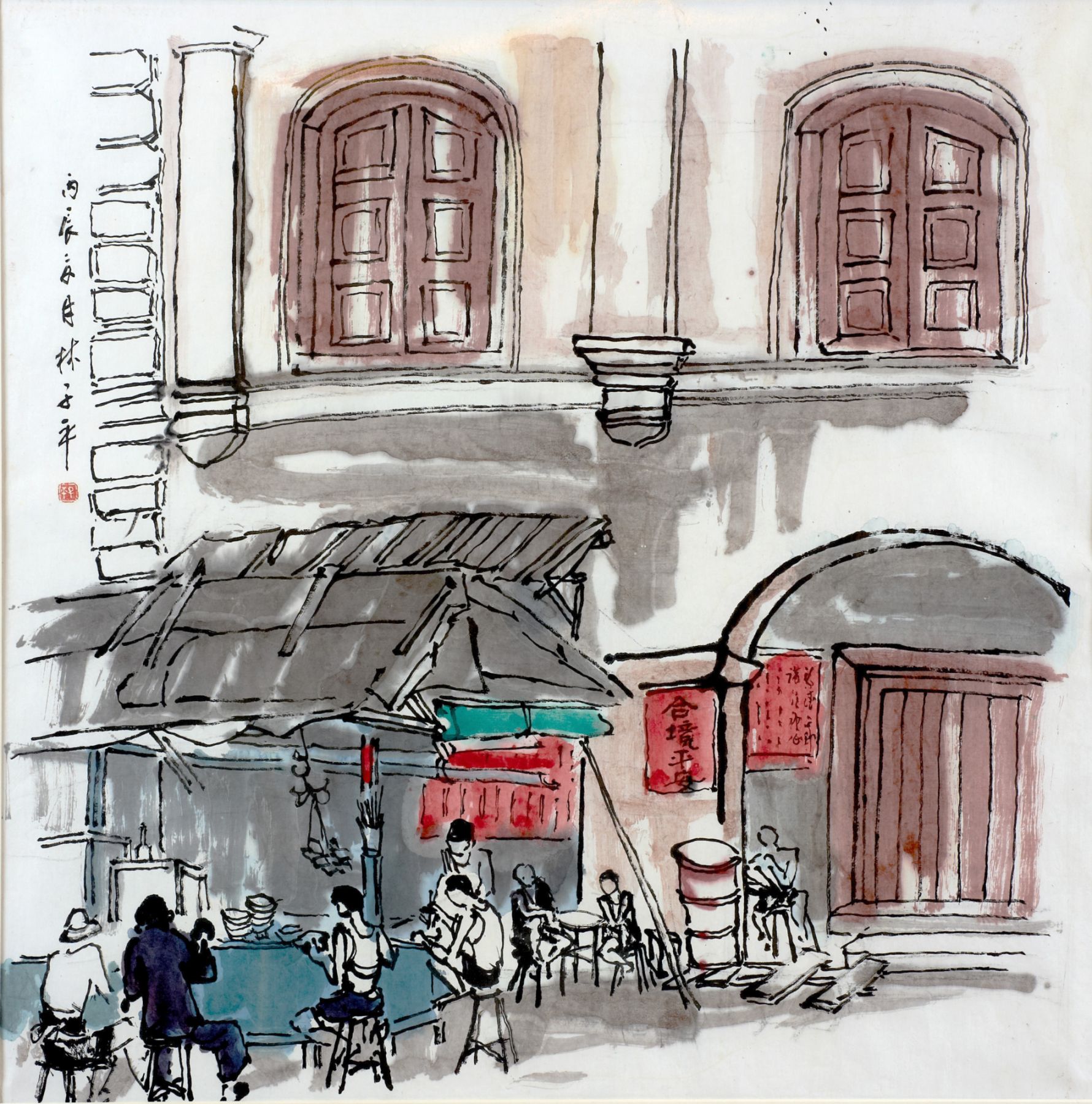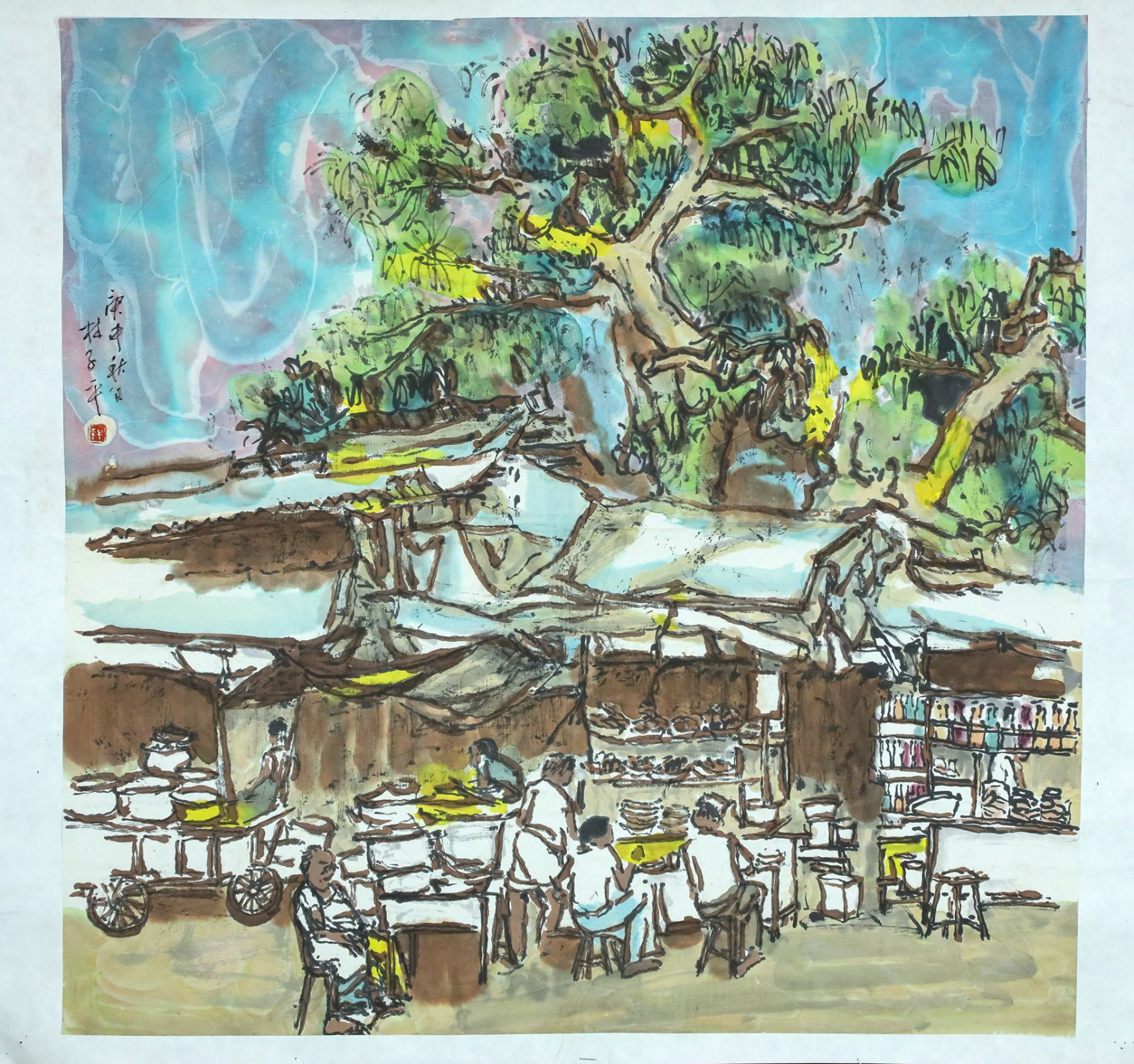From his Chinese ink works to his explorations in abstract art, we look at the life and work of Singapore’s oldest living artist, who turns 100 today
While his calligraphy works would often feature Chinese sayings and proverbs, it is interesting to note that artist Lim Tze Peng’s favourite Chinese character is ai, or love. The subject of love, in particular his love for his family, his friends, his country, is explored in a whole chapter in Soul of Ink: Lim Tze Peng at 100, a new book that celebrates the life and work of Singapore’s oldest living artist, who turns 100 today.
“The book is not just about Lim Tze Peng, the artist, but also Lim Tze Peng, the man—and what we can all learn from this 100-year-old man,” shares its author Woon Tai Ho during our Zoom interview. “Love is very important to Mr Lim. He says in the book that ‘in life, we must have a higher goal. My higher goal is love.’”
Ai is one of two Chinese characters the painter and calligrapher has written many times, with the other being guo, which is country. The two words put together, ai guo, translates as “love for country”. Lim’s love for his country is apparent in his Chinese ink drawings and paintings of historically significant places such as Chinatown and the Singapore River. And this was recently underlined when he indicated during the book launch in mid-June his intention to donate an entire collection of his works to the country, if given the space to exhibit them.
“When I was young, art was an aspiration. And then it became my life. Today I am old, and art is many things. It is my history, my present and also my hope. And it is my hope that I place the most emphasis. I hope my art can inspire a new generation to treasure their past, and through my art allow them to believe in their own art,” Lim shares.
Prime minister Lee Hsien Loong, who was the guest of honour at the book launch, announced the opening of an upcoming gallery at The Arts House dedicated to Singapore’s Cultural Medallion recipients, including Lim who was awarded the country’s highest arts award in 2003 at the age of 82. In 2016, he became the oldest Singaporean at 95 to be awarded the Meritorious Service Medal at the National Day Awards. In a recent Facebook post, PM Lee describes Lim as the living embodiment of the Chinese saying, which translates as “‘you’re never too old to learn’, or in his case, too old to accomplish something”.
In case you missed it: A Gallery to Honour Cultural Medallion Recipients Will Soon Open at The Arts House


BECOMING AN ARTIST
Lim found his passion for art in his youth, but his artistic journey is a story of perseverance and lifelong learning. He was a farmer first, and then a teacher and school principal, before he retired in 1981 at age 60 to become a full-time artist.
Even though he only found recognition in his 80s, “he never stopped painting, creating, and always strived to become better and be proud of his work. Such is his dedication, perseverance and hard work, which is an inspiration to anyone”, expounds gallerist Jazz Chong, the founder of Ode to Art, which has represented Lim since 2007. “This dedication to his art aligns with his motto: ‘to be a good artist, you have to be a good man.’”
While writing the book, Woon, a media veteran who founded Channel NewsAsia, spent his Friday afternoons in the past year mostly observing Lim at work in his studio, which is on the second floor of his terrace house in Telok Kurau, where the centenarian still paints for two to three hours every day, more if sleep eludes him.
“Every new sheet of rice paper is a new opportunity. I don’t like to paint what I have painted before, so when I see a new sheet of paper, I see the possibility of birth,” Lim explains poetically. “No child is exactly the same as the previous child, so I feel a chance to mould and shape the painting in a whole new way that will push the boundaries, and perhaps even achieve a breakthrough.”
Read more: Why Ode To Art Makes Singaporean Artists And Asian Art A Key Focus For The Gallery






